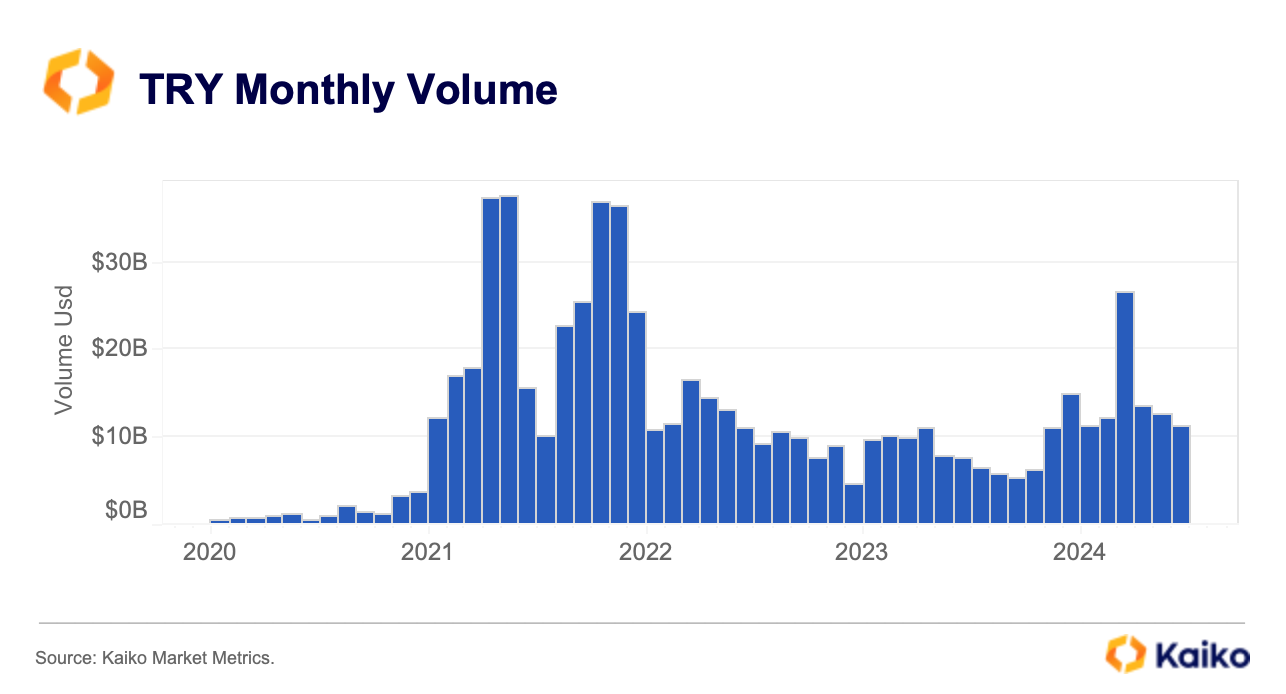Turkish lira’s growing role in crypto
The trading volume of Turkish lira (TRY) has steadily increased, from just a few million four years ago to more than $10 billion. In 2024, the monthly volume, which includes all trading pairs with TRY as a base or quote asset in USD on seven exchanges, showed remarkable resilience against crypto market volatility. It has exceeded $10 billion monthly for eight consecutive months—the longest period on record.
In 2024, the cumulative Lira volume was about $95 billion, almost matching the total annual amount for the whole of 2023.
Since 2022, the TRY has consistently held the fourth position in trading volume behind the US dollar, the Korean won and the euro.
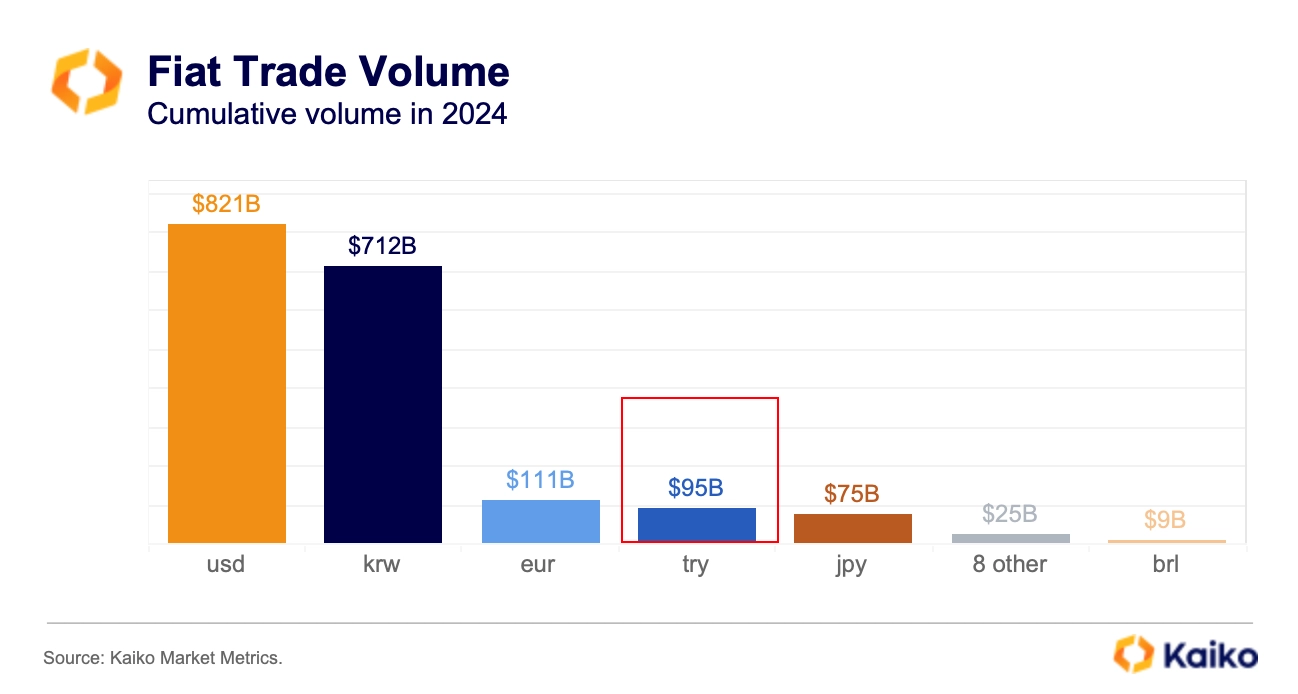
The Lira quickly closed the gap with its closest competitor, the Euro. Its market share against the EUR has risen from just 10% in early 2022 to around 40-50% today. In particular, the TRY surpassed the Euro in total volume for the first time ever in early June.
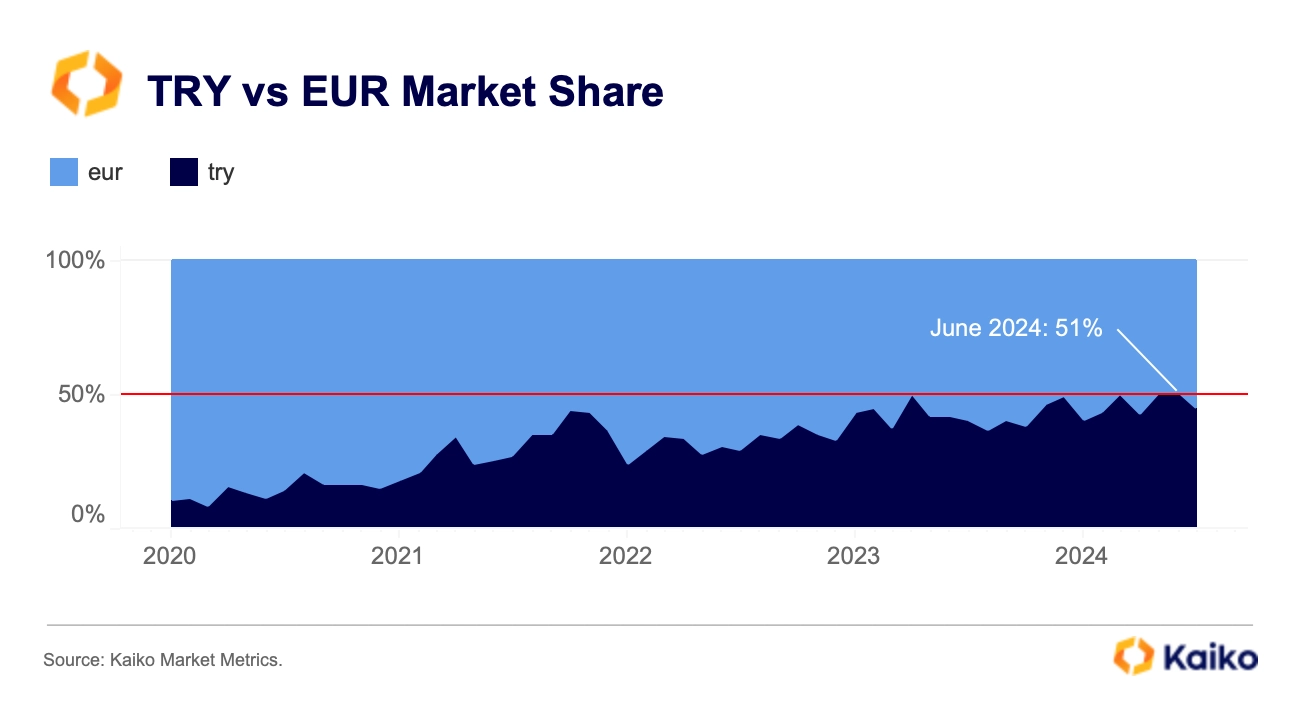
This upward trend was further strengthened by the tighter global regulatory environment. This posed challenges for Binance, as its EUR payment processor dropped support for the exchange last year.
The factors driving crypto adoption in Turkey
Turkey has been struggling with double-digit inflation and currency devaluation for years. The average inflation rate in the country over the past five years was more than 40%.
As inflation rose, the Turkish central bank pursued an unorthodox monetary policy, continuing to cut rates until June 2023. This exacerbated the devaluation of the Turkish Lira, which lost more than 300% of its value between the end of 2020 and the end of 2023.
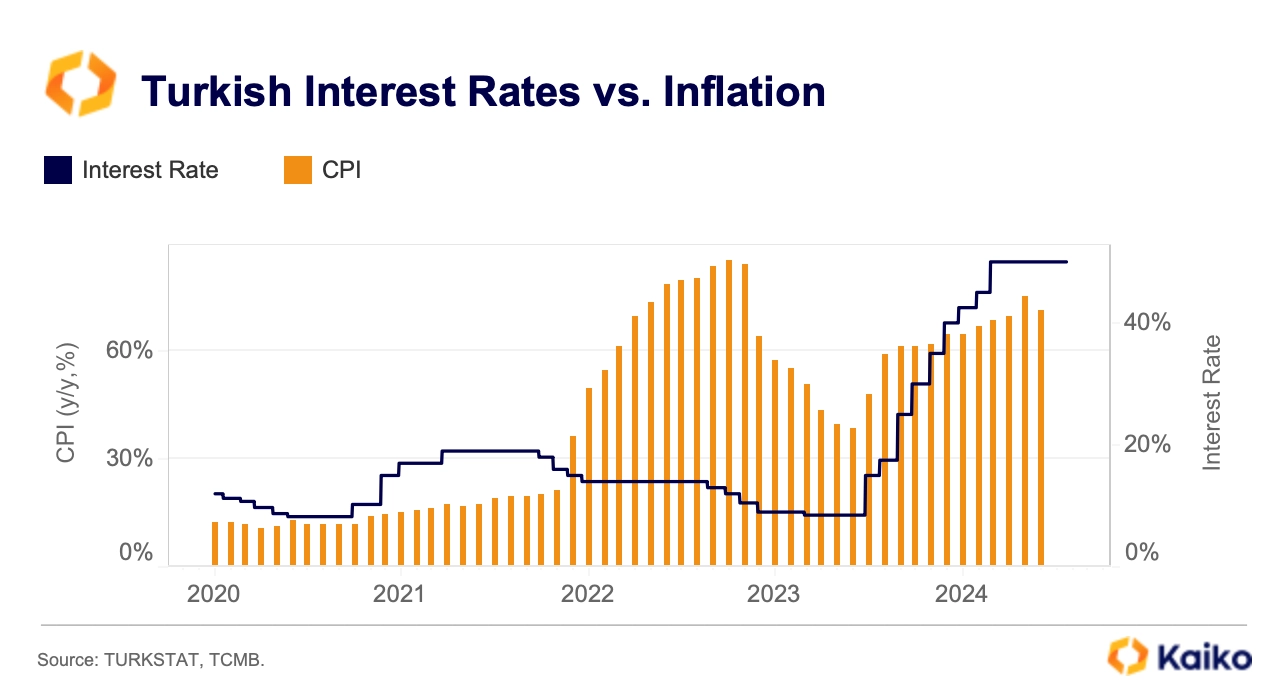
Despite a U-turn to normalize its monetary policy after the 2023 general election, Turkey failed to boost confidence in the TRY, which continued to depreciate in 2024, albeit at a slower pace

On the other hand, despite its high volatility, BTC has appreciated significantly since 2021, offering obvious advantages as a store of value. The combined effect of BTC’s rising value and the depreciation of the Turkish lira led to a surge in the TRY-denominated BTC pair. BTC-TRY has jumped over 800% since 2021, outperforming other fiat-denominated BTC pairs by a large margin.
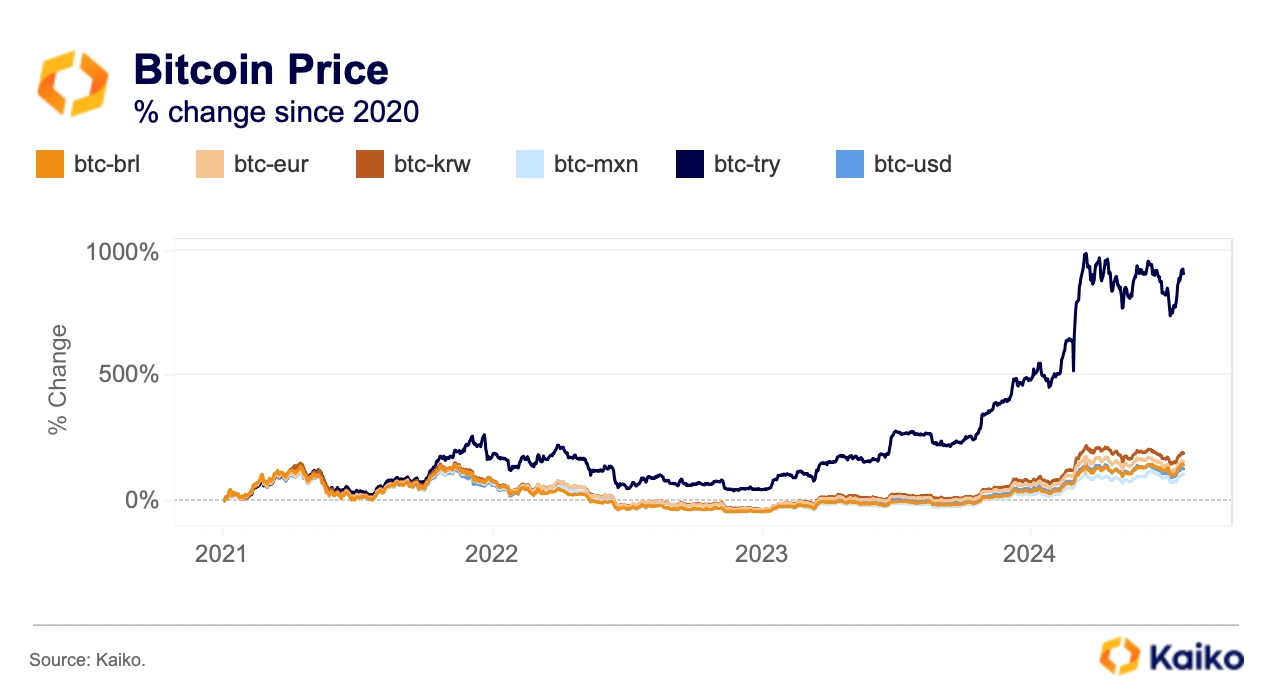
Interestingly, Borsa Istanbul’s main stock index, the BIST 100, which tracks the performance of the 100 largest companies listed on the Istanbul Stock Exchange, also saw triple-digit gains over the same period. This suggests that Turkish investors have also turned to stocks to protect their wealth.
Binance rising dominance
Binance and BTCTurk are the two largest trading platforms for Turkish traders. While BTCTurk remains the largest local platform with over 5 million users, its share of TRY volume has fallen from over 95% in 2020 to just 13% in early July 2024.
Several other exchanges, such as Gate.io, KuCoin and OKX, have also entered the market recently, but have struggled to gain traction. These exchanges’ combined market share remains below 1%.
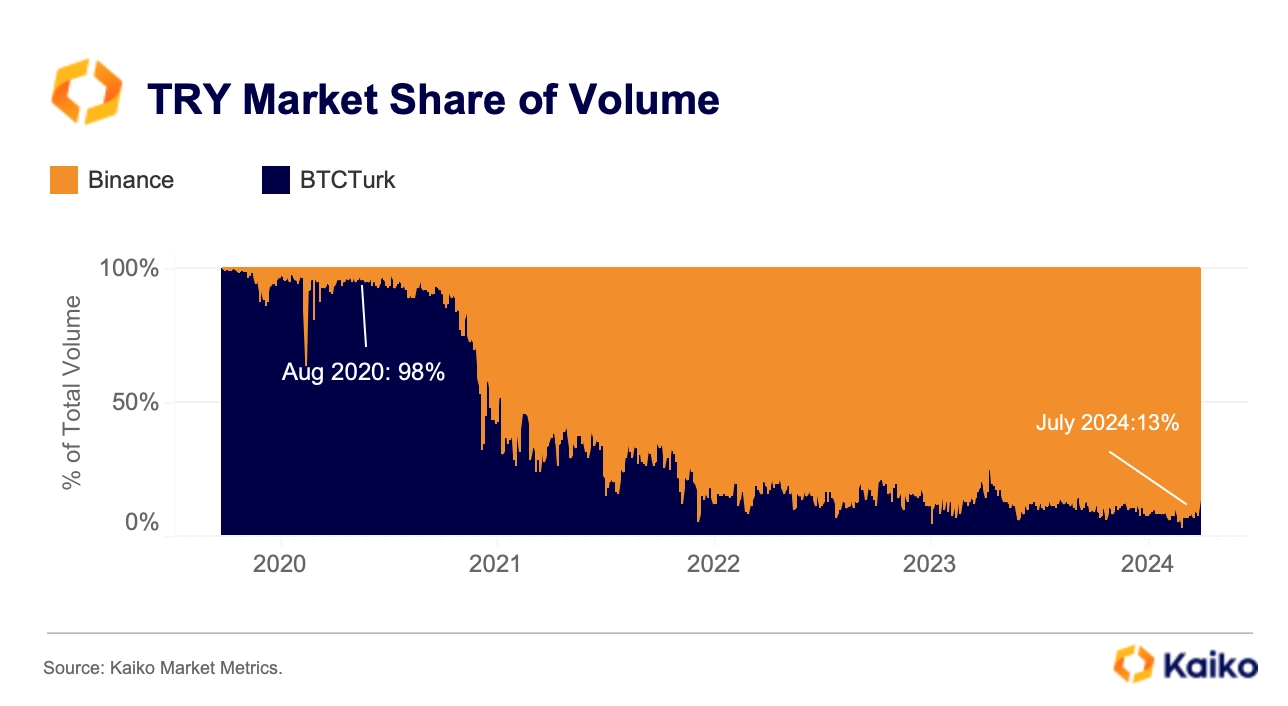
Binance’s rising dominance can be partly explained by its deep liquidity and low fees. Between July 2022 and March 2023, the exchange offered zero fees for BTC-TRY trading as part of a large-scale zero-fee campaign. Although fees have been reintroduced, the average cost of trading, as measured by the BTC-TRY bid-ask spread, remains roughly twice as high on BTCTurk (5.4 bps) compared to Binance (2.2 bps) .
Binance also offers a large selection of TRY-denominated trading pairs and has aggressively listed new pairs in recent years despite the 2022 crypto bear market. This year alone, the exchange launched 61 new TRY trading pairs, bringing the total number to over 200.
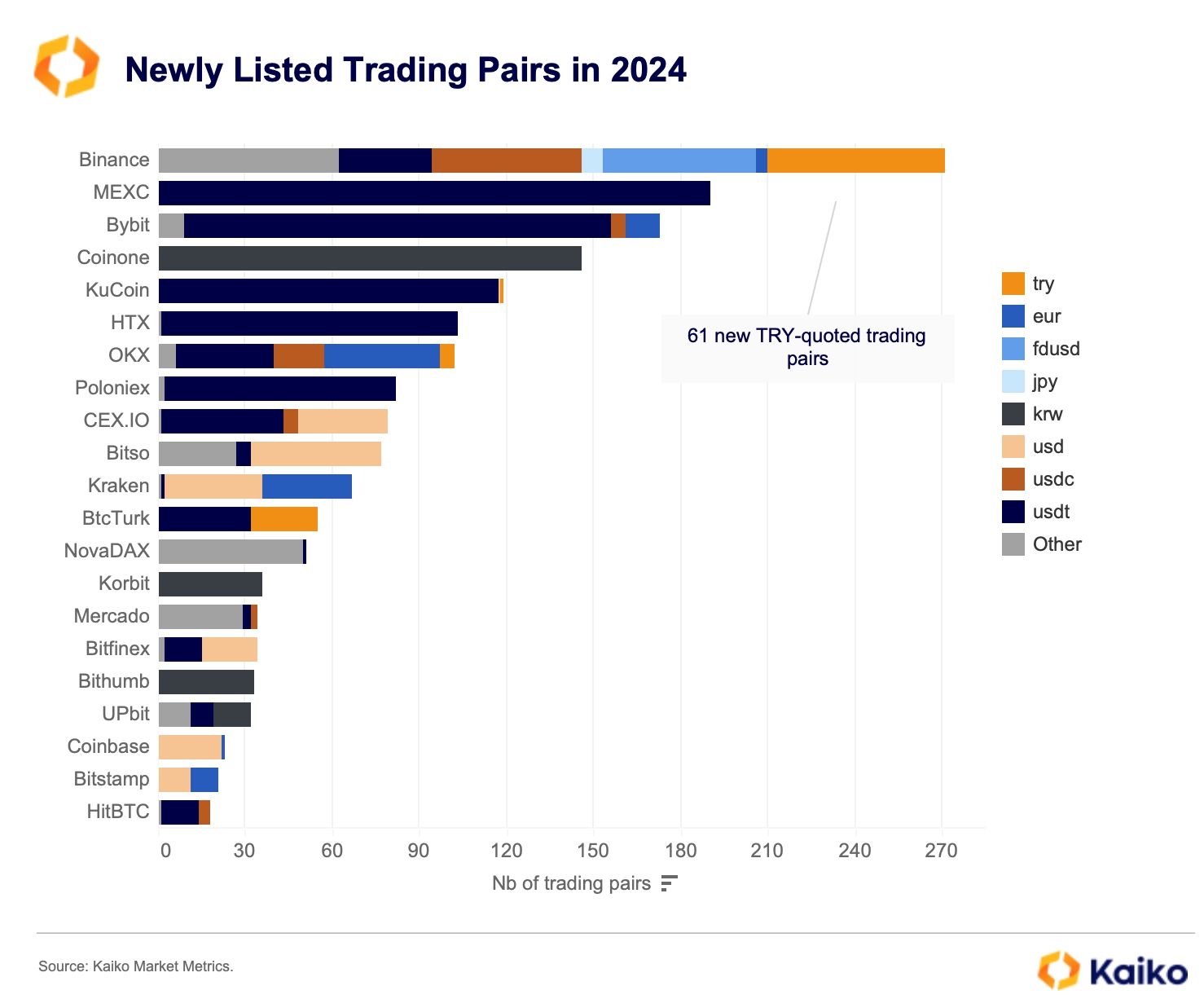
As the market recovered, other exchanges also increased their TRY listings. In just seven months, the number of new TRY-denominated pairs on the exchanges covered by Kaiko reached an all-time high.
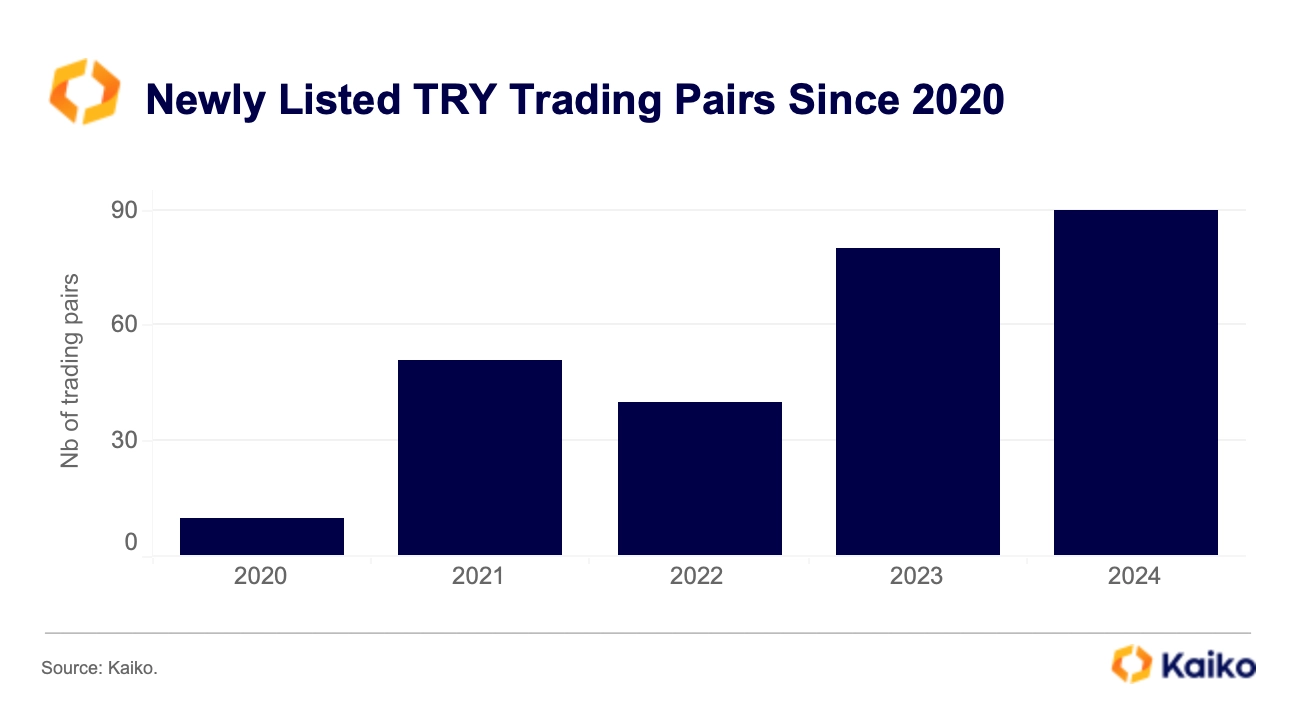
Traders invest in both stablecoins and memecoins
Turkey’s inflationary environment has greatly promoted the use of stablecoins in recent years. In 2024, USDT-TRY is by far the largest trading pair by volume on Binance with over $22 billion. It is more than five times the next in line – pepeusdt with $4 billion.

It’s worth noting that meme tokens are all surpassing Bitcoin in trading volume this year. This suggests that Turkish traders have also turned to riskier crypto-assets to hedge against currency volatility and speculate.
This increased use of stablecoins is also evident when examining the two largest Bitcoin trading pairs on BTCTurk – BTC-USDT and BTC-TRY.
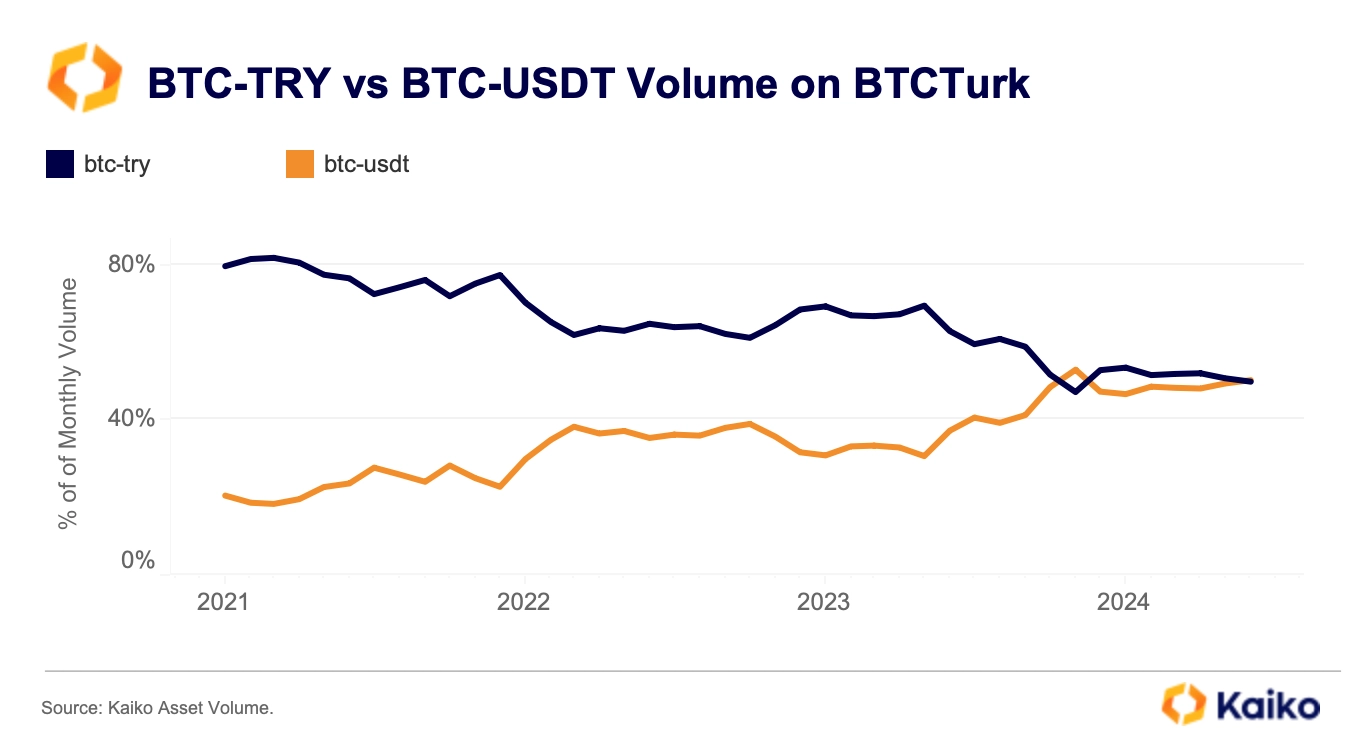
The share of the USDT quoted trading pair rose from around 20% in 2021 to more than 50% by the end of June.
Turkey’s New Crypto Regulation
On July 2, the Turkish parliament approved new legislation aimed at helping Turkey leave the FATF’s “grey list” of countries with inadequate anti-money laundering (AML) measures.
It introduces a licensing regime, compliance and transaction requirements for crypto-asset service providers – CASP. In addition, platforms and custody services must pay a total annual fee of 2% of their trading revenue.
The new rules place CASPs under the supervision of the Capital Markets Board of Turkey (CBM), which may issue additional regulations on various matters such as asset listings and delistings in the coming months. This implies that secondary legislation is yet to come, and more time will be needed to fully understand the impact of this legislation on both local and foreign market participants.
In general, exchanges are expected to face increased compliance costs and operational challenges, with varying impacts on domestic and foreign players. Local exchanges such as BTCTurk must comply with the new rules by August 2, a month after the law’s entry into force. Global crypto exchanges that do not have a separate entity in Turkey but target Turkish customers will also be subject to these regulations. On the day the legislation was passed, Binance announced that it would continue to offer TRY trading pairs, but would gradually stop all marketing activities targeting Turkish users and remove Turkish language support from its platform.
Deduction
Despite the ups and downs of the crypto market, crypto adoption in Turkey has continued to grow at a steady pace in recent years, fueled by double-digit inflation and currency devaluation. Turkish traders have invested in both stablecoins and high-beta altcoins suggesting that crypto is seen as both a store of value and speculative tool.
The strong growth of the Turkish market has led to increasing competition among exchanges, looking for new sources of income. So far, Binance has been the undisputed market leader.
However, the newly adopted Turkish crypto regulation, which aims to bring much-needed clarity, could reshape the market.
Disclaimer for Uncirculars, with a Touch of Personality:
While we love diving into the exciting world of crypto here at Uncirculars, remember that this post, and all our content, is purely for your information and exploration. Think of it as your crypto compass, pointing you in the right direction to do your own research and make informed decisions.
No legal, tax, investment, or financial advice should be inferred from these pixels. We’re not fortune tellers or stockbrokers, just passionate crypto enthusiasts sharing our knowledge.
And just like that rollercoaster ride in your favorite DeFi protocol, past performance isn’t a guarantee of future thrills. The value of crypto assets can be as unpredictable as a moon landing, so buckle up and do your due diligence before taking the plunge.
Ultimately, any crypto adventure you embark on is yours alone. We’re just happy to be your crypto companion, cheering you on from the sidelines (and maybe sharing some snacks along the way). So research, explore, and remember, with a little knowledge and a lot of curiosity, you can navigate the crypto cosmos like a pro!
UnCirculars – Cutting through the noise, delivering unbiased crypto news

